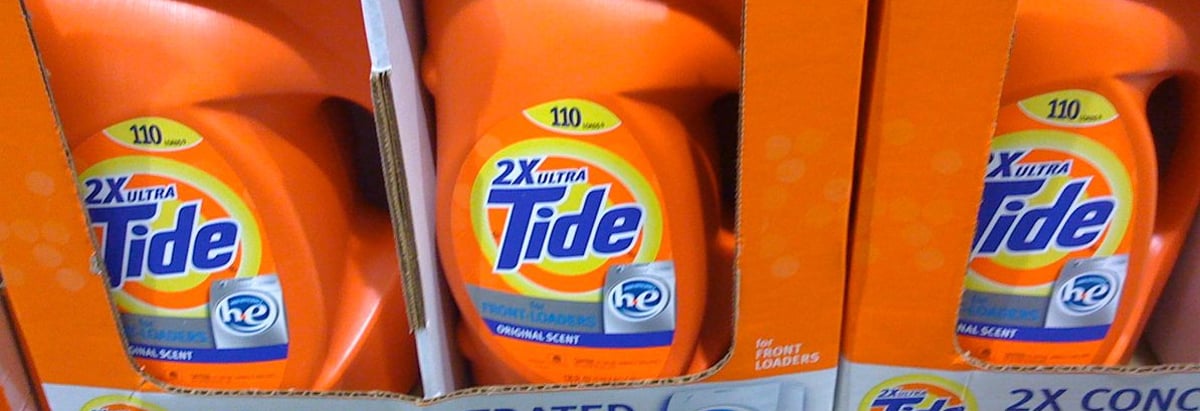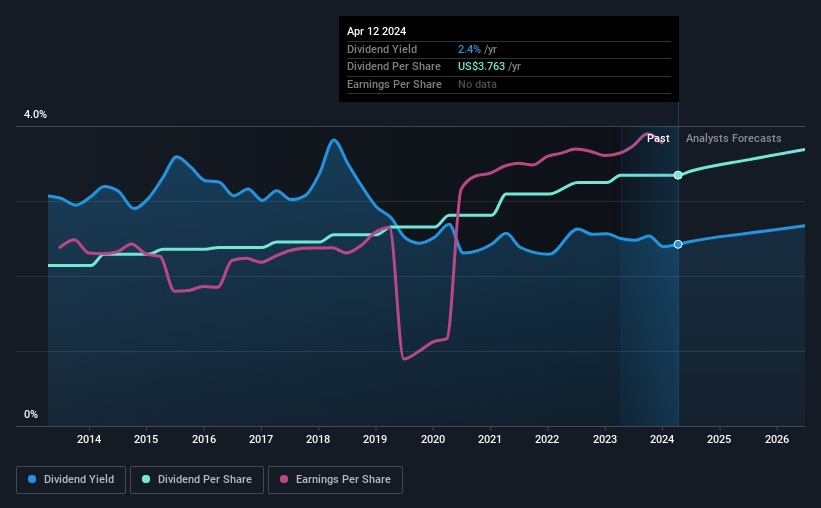- United States
- /
- Household Products
- /
- NYSE:PG
Interested In Procter & Gamble's (NYSE:PG) Upcoming US$1.0065 Dividend? You Have Four Days Left

Regular readers will know that we love our dividends at Simply Wall St, which is why it's exciting to see The Procter & Gamble Company (NYSE:PG) is about to trade ex-dividend in the next 4 days. The ex-dividend date is one business day before a company's record date, which is the date on which the company determines which shareholders are entitled to receive a dividend. The ex-dividend date is an important date to be aware of as any purchase of the stock made on or after this date might mean a late settlement that doesn't show on the record date. This means that investors who purchase Procter & Gamble's shares on or after the 18th of April will not receive the dividend, which will be paid on the 15th of May.
The company's next dividend payment will be US$1.0065 per share. Last year, in total, the company distributed US$3.76 to shareholders. Looking at the last 12 months of distributions, Procter & Gamble has a trailing yield of approximately 2.4% on its current stock price of US$155.33. We love seeing companies pay a dividend, but it's also important to be sure that laying the golden eggs isn't going to kill our golden goose! So we need to investigate whether Procter & Gamble can afford its dividend, and if the dividend could grow.
Check out our latest analysis for Procter & Gamble
Dividends are usually paid out of company profits, so if a company pays out more than it earned then its dividend is usually at greater risk of being cut. Procter & Gamble paid out 61% of its earnings to investors last year, a normal payout level for most businesses. A useful secondary check can be to evaluate whether Procter & Gamble generated enough free cash flow to afford its dividend. Dividends consumed 57% of the company's free cash flow last year, which is within a normal range for most dividend-paying organisations.
It's positive to see that Procter & Gamble's dividend is covered by both profits and cash flow, since this is generally a sign that the dividend is sustainable, and a lower payout ratio usually suggests a greater margin of safety before the dividend gets cut.
Click here to see the company's payout ratio, plus analyst estimates of its future dividends.

Have Earnings And Dividends Been Growing?
Businesses with strong growth prospects usually make the best dividend payers, because it's easier to grow dividends when earnings per share are improving. If earnings fall far enough, the company could be forced to cut its dividend. Fortunately for readers, Procter & Gamble's earnings per share have been growing at 10% a year for the past five years. Procter & Gamble has an average payout ratio which suggests a balance between growing earnings and rewarding shareholders. This is a reasonable combination that could hint at some further dividend increases in the future.
The main way most investors will assess a company's dividend prospects is by checking the historical rate of dividend growth. Procter & Gamble has delivered an average of 4.6% per year annual increase in its dividend, based on the past 10 years of dividend payments. It's good to see both earnings and the dividend have improved - although the former has been rising much quicker than the latter, possibly due to the company reinvesting more of its profits in growth.
Final Takeaway
Is Procter & Gamble an attractive dividend stock, or better left on the shelf? It's good to see earnings are growing, since all of the best dividend stocks grow their earnings meaningfully over the long run. However, we'd also note that Procter & Gamble is paying out more than half of its earnings and cash flow as profits, which could limit the dividend growth if earnings growth slows. It might be worth researching if the company is reinvesting in growth projects that could grow earnings and dividends in the future, but for now we're not all that optimistic on its dividend prospects.
On that note, you'll want to research what risks Procter & Gamble is facing. For example, we've found 2 warning signs for Procter & Gamble that we recommend you consider before investing in the business.
A common investing mistake is buying the first interesting stock you see. Here you can find a full list of high-yield dividend stocks.
New: Manage All Your Stock Portfolios in One Place
We've created the ultimate portfolio companion for stock investors, and it's free.
• Connect an unlimited number of Portfolios and see your total in one currency
• Be alerted to new Warning Signs or Risks via email or mobile
• Track the Fair Value of your stocks
Have feedback on this article? Concerned about the content? Get in touch with us directly. Alternatively, email editorial-team (at) simplywallst.com.
This article by Simply Wall St is general in nature. We provide commentary based on historical data and analyst forecasts only using an unbiased methodology and our articles are not intended to be financial advice. It does not constitute a recommendation to buy or sell any stock, and does not take account of your objectives, or your financial situation. We aim to bring you long-term focused analysis driven by fundamental data. Note that our analysis may not factor in the latest price-sensitive company announcements or qualitative material. Simply Wall St has no position in any stocks mentioned.
About NYSE:PG
Procter & Gamble
Engages in the provision of branded consumer packaged goods worldwide.
Solid track record established dividend payer.
Similar Companies
Market Insights
Community Narratives



